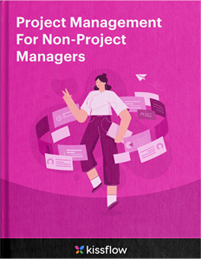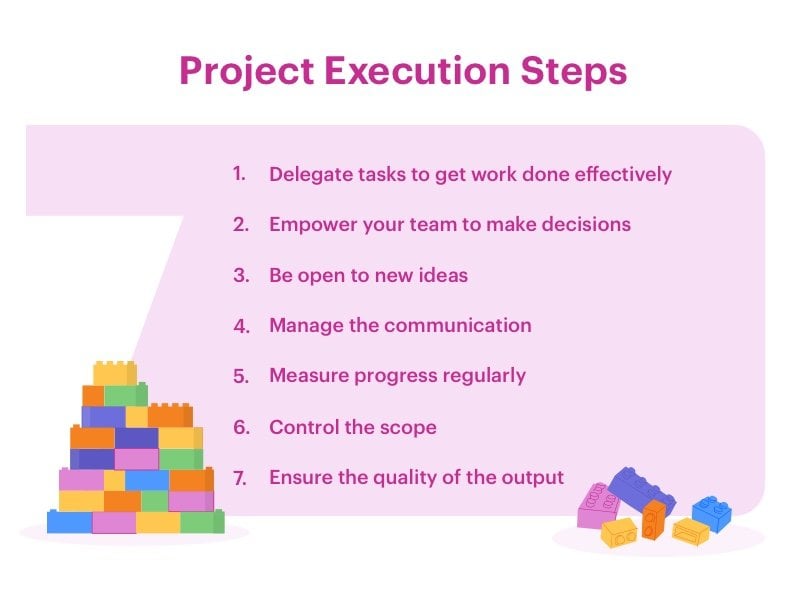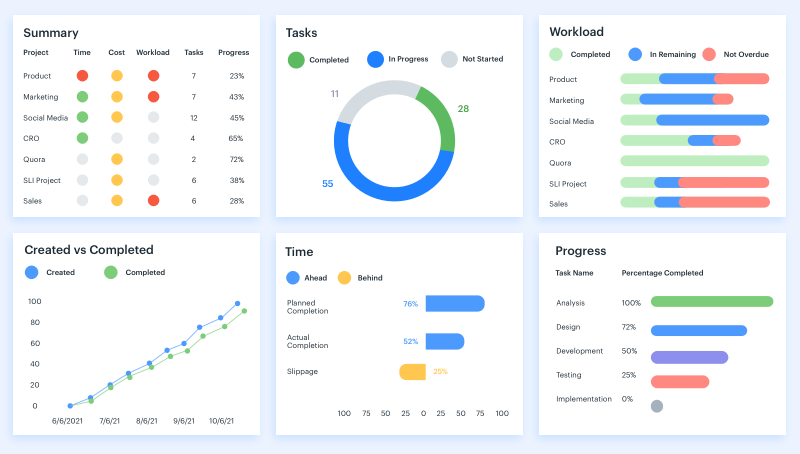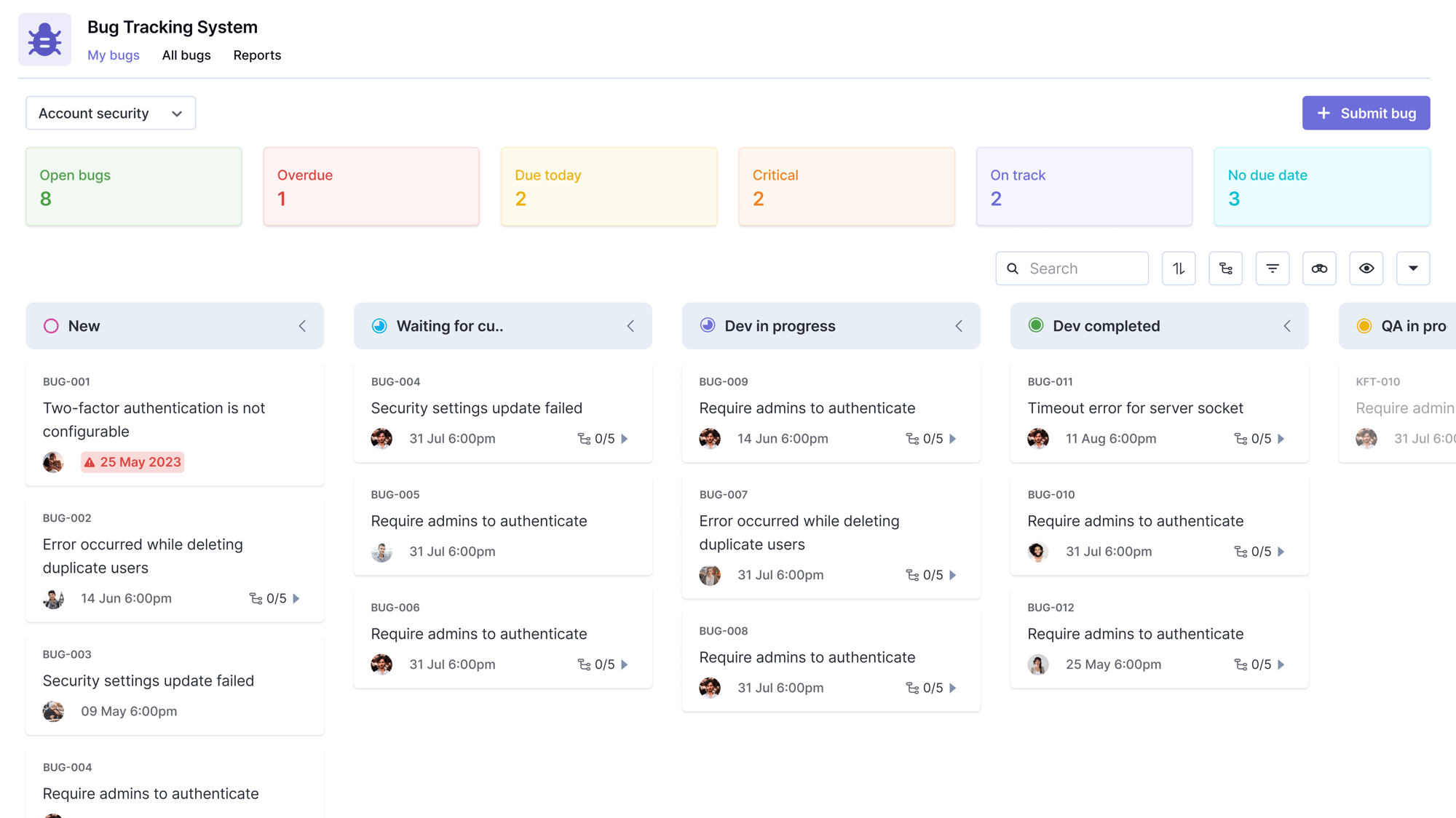You’ve done the difficult “figuring out” part; you know what needs to be done, who’s going to do it, and when it needs to be done. You now have the predefined steps that will help your team actualize your plans.
What is project execution?
The project execution phase is usually the longest phase in the project life cycle; and the most demanding. In the project execution phase:
- Your team carries out all the planned activities, constructs deliverables, and presents them to project stakeholders
- Your focus, as a project manager changes to performing and supervising all activities to create deliverables as outlined in the project plan
- You’ll need to continuously track the project’s progress and ensure that the milestones and deliverables stick to the project schedule
- You need to step back a bit and let your team carry out the project plan
In project management, there might be hiccups along the way but if you catch them early on, it’s easy to course-correct. For this reason, the execution stage always happens in concurrence with the next phase–project controlling and monitoring.
The majority of the activities during the execution phase will be handled by your project team. It’s a fine line to tread because you need to give your team enough autonomy while taking care that everything goes according to plan.
In essence, the project manager has three main objectives during the execution phase:
- Managing people
- Managing processes
- Managing communication
The benefits of a well-executed project are threefold:
- The project can be completed on time and budget
- Team morale can be maintained
- Stakeholders are satisfied with overall project progress

Want to learn project management but put off by jargon?
Learn what's important in the simplest ebook for non-project managers.
What happens during the execution phase?
Depending on the nature of the project and your organizational preferences, you’ll decide the sequence of activities that will happen during the execution phase.
- Execute the project scope
- Manage the team’s work
- Recommend changes and corrective actions
- Manage project communication with stakeholders
- Conduct team-building exercises
- Celebrate project milestones and motivate team members
- Hold status review meetings to make sure everything is on schedule
- Document all changes to the project plan
What challenges are you likely to face?
In one of his project management books, Filling Execution Gaps, Todd Williams identifies six gaps that companies need to close to ensure project success.
- A lack of common understanding
- Uninvolved sponsors
- Misalignment with strategic project objectives and goals
- Poor change management processes
- Ineffective corporate governance
- Poor leadership
Discover how Kissflow's Low-code platform
What’s produced during the execution phase?
The execution phase is where all the action happens and the plans start materializing. There will be changes to the scope and the documentation will change as a result.
Project deliverables
Project deliverables are the tangible outputs of the project. They need to be reviewed, tested, and meet the acceptance criteria given by the clients.
Change requests
When client expectations change or there’s a disconnect between the team’s understanding of the client’s requirements, scope changes happen. These are documented in the change requests, which are then reviewed and approved.
Performance data
The execution stage produces a lot of data points that you can use to optimize your team’s performance. You can find where your team is spending most of their time with the help of the project dashboard and how you can cut down on time and costs.
Issue log
Whenever there are bugs, issues, or defects, you document them in the issue log. This will help you get back to the issues and fix them.
Documentation updates
Any changes to the documents created during the planning phase like the project scope and project schedule will be documented.
7 strategies for successful project execution
According to the PMI’s Pulse of the Profession report, the surveyed executive leaders said that only 60 percent of their project management strategies met goals. There’s a huge gap between the plan and the day-to-day implementation.
Here are some strategies for a project execution plan that will help you bridge that gap:

1. Leverage project management tool
Using the right project management tool can be a major differentiating factor for your team. The best tools on the market offer deep visibility into work status and reduce the need for manual time tracking during the execution phase. Additionally, they also provide the ability to generate periodic customs reports in an easily accessible manner.
At the end of the day, the right project management software like Kissflow Project is the one that boosts your efficiency without the need to get past a steep learning curve.
Kissflow Projects gives you more time todo work you enjoy
2. Delegate tasks to get work done effectively
Task delegation does not mean that you let go of every aspect of the project and start depending on the team members. Instead, it means that you enable your team and build their confidence by making them responsible for a small part of the project. It can be a repetitive task or something you feel a particular member is better at.
3. Empower your team to make decisions
An empowering environment is a sufficient motivator for team members that encourages them to go above and beyond. Give them enough authority to make decisions and take the necessary steps to fulfill the plan.
4. Be open to new ideas
It’s good practice to involve the team in making some decisions. Even if they suggest a different approach than what you had in mind, appreciate their input, and be flexible enough to accept better suggestions. This will serve as a good motivator and make the team feel valued and their contributions acknowledged.
5. Manage team communication
It’s the responsibility of the project manager to consistently maintain effective project team collaboration with the project stakeholders. You need to share the project’s progress with all stakeholders throughout this phase frequently.
You've never seen low-code and no-code together like this, Book Your Free Demo Now!
Schedule periodic meetings with the project team to review the current status of the project with the help of project reports. Discuss the next steps in the project, obstacles, and how to solve these problems during these meetings.
6. Measure progress regularly
There’s no way to know if you’re staying on track if you aren’t measuring the project’s progress. Your project planning process included setting measurable goals and project KPIs (key performance indicators). This is where all the effort you put into documentation comes in handy.
During the execution phase, risks may materialize. By continuously assessing the risks, you equip your team with contingencies to build a project risk management strategy and keep the project from failure.

Kissflow Project’s in-depth reports make monitoring and recording project progress simple. Sign up for free today!
7. Control the scope
Almost every project suffers from a nasty monster called Scope Creep. It is when the project slowly grows out of your control and beyond the project’s original scope.
Now, you cannot and should not avoid all change requests. Most projects require you to iterate and adapt to change. Market conditions, client needs, organizational priorities can change and you need to deal with them.
Bonus Point – Ensure the quality of output and deliverables with stakeholder
No matter how flawless your team is, there isn’t a project that’s devoid of defects. It’s always a good practice to make sure that you’ve translated the client’s expectations into the deliverable. Test those deliverables and see if they meet the acceptance criteria.
Once you have the deliverables ready, you’d schedule a formal phase review with all key stakeholders. All deliverables are reviewed, accepted, and approved. If there are any passable issues, they are documented along with their resolution plan and all relevant plans and documents are updated accordingly. Once you have the green light from the stakeholders, you officially proceed to the next phase – the project closure phase.
How a project management software tool can help execute projects
An entirely manual or spreadsheet-based approach can prove to be a stumbling block during project execution. What will serve your team’s needs during the frenetic execution phase is a cloud-based project management tool that aids collaboration while also being highly intuitive to use.
Kissflow Project is just such a solution. It’s a project management software that provides total visibility into all the work that goes into a productive execution phase while also being extremely simple for every team member to use. Some notable features of the Kissflow Project are
- List, Kanban, and matrix views
- On Hold, In-Progress, and Done states
- Powerful data-based reports
- Automated reminders for when deadlines approach
There’s a whole lot more Kissflow Project is capable of within its simple but powerful interface. Sign up for a free today!
Your search for Project Management has landed you here. Wondering why?
As a user, you'll experience the full value of Kissflow by implementing it across departments for diverse use cases rather than just addressing isolated needs like a project management tool for a single team or department.
Application Development Platform
Digital Transformation Platform
Find out more about the benefits of the Kissflow Low-Code Development platform.

%20(2).png?width=2000&name=PSE%20Dashboard%20(3)%20(2).png)
.png?width=2000&name=Dashboard%20(5).png)





